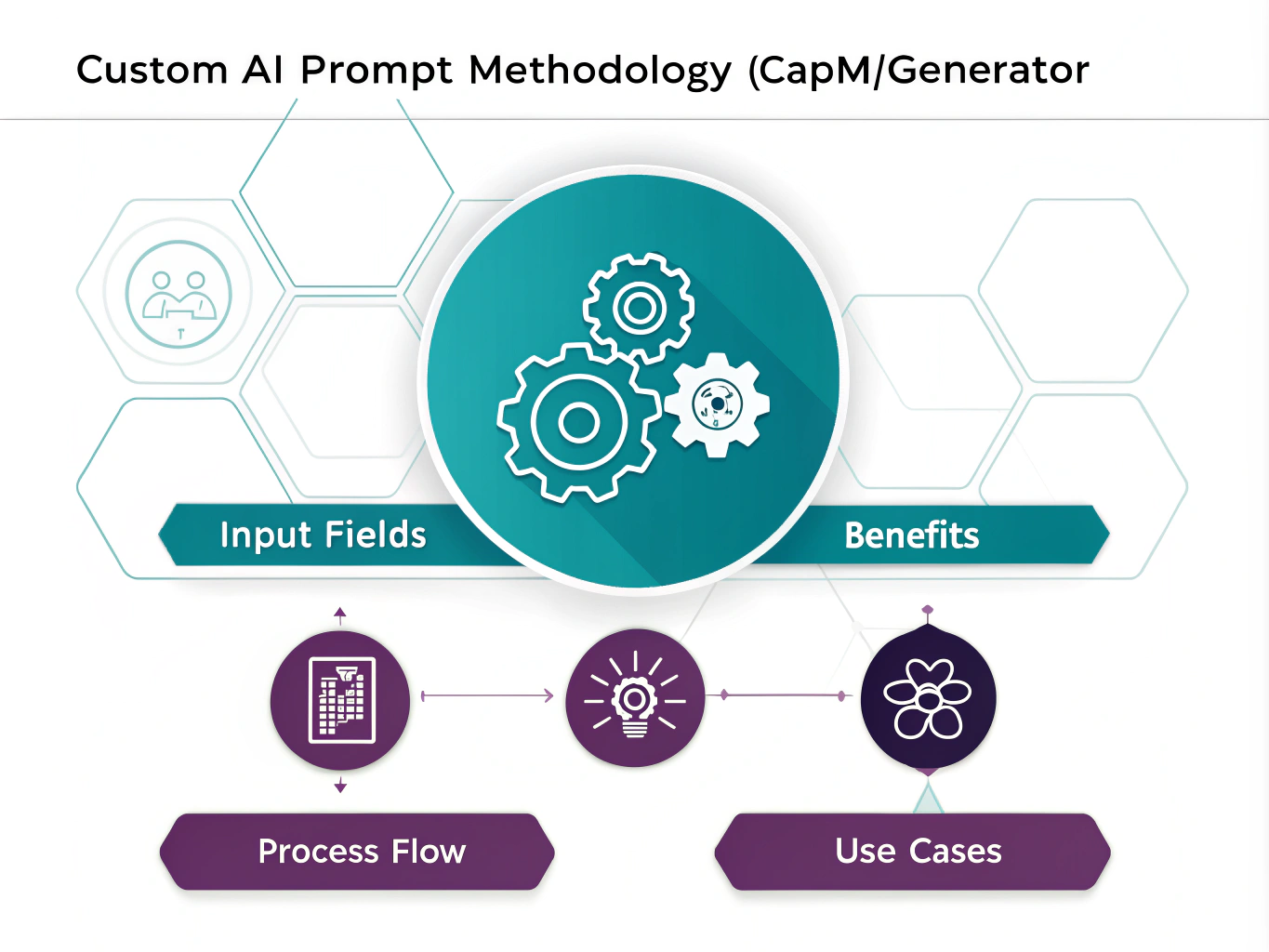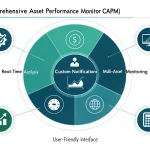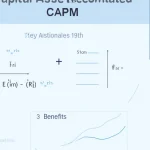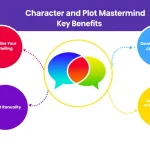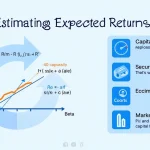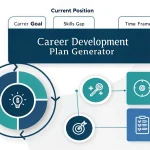Prompt Format Generator
Is this tool helpful?
How to Use the Custom AI Prompt Methodology (CAPM) Generator Effectively
Step-by-Step Guide to Using the CAPM Generator
The Custom AI Prompt Methodology (CAPM) Generator is a powerful tool designed to help you create structured and effective prompts for AI-assisted content generation. Follow these steps to make the most of this tool:
- Name your prompt format: In the “Format Name” field, enter a unique and memorable name for your custom prompt methodology. For example, you could use “SCOPE+” or “CLARITY-AI”.
- Define the purpose: In the “Prompt Purpose” textarea, clearly articulate the goal of the prompts you’ll be generating. For instance, “To create data-driven marketing content that resonates with millennials” or “To generate engaging science fiction story ideas based on current technological trends”.
- List essential elements: In the “Essential Elements” section, outline the key components that should be included in your prompt format. For example, “Target audience, Key message, Tone of voice, Call-to-action, Word count” or “Setting, Characters, Conflict, Technology focus, Plot twist”.
- Provide specific guidelines: In the “Specific Guidelines” textarea, include any best practices or rules for prompt engineering that are particularly relevant to your needs. This could include “Use active voice for increased engagement” or “Incorporate sensory details to enhance immersion”.
- Offer an example scenario: In the “Example Scenario” field, provide a concrete situation where your prompt format could be applied. For instance, “Creating a social media campaign to promote sustainable fashion among young professionals” or “Developing a short story about a Mars colony facing an unexpected alien artifact discovery”.
- Generate your custom prompt format: Click the “Generate Prompt Format” button to create your tailored CAPM based on the information you’ve provided.
- Review and refine: Examine the generated prompt format in the results section. If necessary, adjust your inputs and regenerate until you’re satisfied with the output.
- Copy and implement: Use the “Copy to Clipboard” button to easily transfer your new CAPM to your preferred workspace for immediate use in your AI-assisted content creation process.
Unlocking the Power of AI-Assisted Content Creation with CAPM
In the rapidly evolving landscape of artificial intelligence and content creation, having a structured approach to prompt engineering is crucial for achieving consistent, high-quality results. The Custom AI Prompt Methodology (CAPM) Generator is an innovative tool designed to empower content creators, marketers, writers, and AI enthusiasts with the ability to craft tailored prompt formats that cater to their specific needs and objectives.
By leveraging the CAPM Generator, users can create a systematic framework for interacting with AI language models, ensuring that the prompts they use are clear, comprehensive, and optimized for generating the desired output. This tool bridges the gap between human creativity and AI capabilities, enabling users to harness the full potential of AI-assisted content creation while maintaining control over the process and outcomes.
The Significance of Structured Prompts in AI Interaction
When working with AI language models, the quality and structure of the input prompt directly influence the relevance and coherence of the generated content. A well-crafted prompt methodology serves as a communication bridge between human intent and AI comprehension, guiding the model to produce results that align closely with the user’s expectations and requirements.
The CAPM Generator allows users to define a customized framework that incorporates essential elements such as context, objectives, constraints, and output format. By consistently using a structured prompt methodology, content creators can:
- Enhance the consistency and quality of AI-generated content
- Reduce the need for extensive editing and refinement
- Improve workflow efficiency in content production
- Maintain brand voice and style across various content pieces
- Facilitate collaboration among team members working with AI tools
Benefits of Using the CAPM Generator
1. Customization and Flexibility
The CAPM Generator offers unparalleled flexibility, allowing users to create prompt methodologies tailored to their specific industry, niche, or project requirements. Whether you’re working on marketing campaigns, educational content, creative writing, or technical documentation, you can design a prompt format that addresses your unique needs and challenges.
2. Consistency in Content Creation
By establishing a standardized prompt structure, the CAPM Generator ensures consistency across all AI-assisted content creation efforts. This is particularly valuable for organizations and teams working on large-scale content projects, as it helps maintain a uniform approach and quality standard throughout the production process.
3. Enhanced Productivity and Efficiency
With a well-defined prompt methodology, content creators can significantly reduce the time spent on formulating effective prompts for each new task. The CAPM Generator streamlines the prompt creation process, allowing users to focus more on ideation and content strategy rather than the mechanics of prompt engineering.
4. Improved AI Output Quality
By incorporating essential elements and specific guidelines into the prompt structure, users can guide AI models more effectively, resulting in higher-quality initial outputs. This reduces the need for extensive revisions and edits, accelerating the content production cycle.
5. Scalability of Content Operations
As content demands grow, the CAPM Generator enables organizations to scale their AI-assisted content creation efforts more efficiently. The standardized approach facilitates easier onboarding of new team members and ensures consistent results across different projects and content types.
6. Adaptability to Evolving AI Capabilities
As AI language models continue to advance, the flexible nature of the CAPM Generator allows users to adapt their prompt methodologies accordingly. This ensures that content creators can always leverage the latest AI capabilities while maintaining a structured approach to prompt engineering.
Addressing User Needs and Solving Specific Problems
Overcoming Common Challenges in AI-Assisted Content Creation
The CAPM Generator addresses several key challenges faced by content creators when working with AI tools:
1. Lack of Consistency in AI Outputs
Problem: Many users struggle with inconsistent results when using AI for content generation, leading to time-consuming revisions and edits.
Solution: The CAPM Generator allows users to create a standardized prompt structure that includes all necessary context and guidelines. This ensures that the AI model receives consistent inputs, leading to more uniform and reliable outputs.
2. Difficulty in Maintaining Brand Voice
Problem: Ensuring that AI-generated content aligns with a specific brand voice or style can be challenging, especially for large organizations with multiple content creators.
Solution: By incorporating brand-specific elements such as tone, key messaging, and target audience into the custom prompt methodology, users can guide the AI to produce content that consistently reflects the desired brand voice.
3. Inefficient Prompt Creation Process
Problem: Content creators often spend excessive time crafting effective prompts for each new content piece, reducing overall productivity.
Solution: The CAPM Generator enables users to create a reusable prompt template that can be quickly adapted for various content tasks, significantly reducing the time spent on prompt formulation.
4. Limited Control Over AI Outputs
Problem: Users may feel they have insufficient control over the content generated by AI models, leading to outputs that require substantial human intervention.
Solution: By defining specific constraints, objectives, and output formats within the custom prompt methodology, users can exert greater control over the AI-generated content, resulting in outputs that more closely match their requirements.
Practical Application Example
Let’s consider a scenario where a digital marketing agency wants to create a custom prompt methodology for generating social media content across various platforms. Using the CAPM Generator, they might create a format called “ENGAGE+” with the following components:
- E: Essence (core message or value proposition)
- N: Network (specific social media platform)
- G: Goal (desired user action or engagement metric)
- A: Audience (target demographic and psychographic details)
- G: Guidelines (brand voice, tone, and style specifications)
- E: Examples (references to successful past content)
- +: Plus (additional elements like hashtags, emojis, or character limits)
With this custom methodology in place, the agency can quickly generate prompts for various clients and campaigns, ensuring consistency and efficiency in their social media content creation process.
Examples and Use Cases
1. Educational Content Development
A textbook publisher could use the CAPM Generator to create a prompt methodology for developing supplementary online materials. Their custom format, “LEARN+,” might include:
- L: Learning Objective (specific skill or knowledge to be acquired)
- E: Educational Level (grade or academic year)
- A: Assessment Type (quiz, interactive exercise, discussion prompt)
- R: Related Concepts (connections to other topics in the curriculum)
- N: Narrative Element (real-world application or engaging scenario)
- +: Accessibility Considerations (guidelines for inclusive content)
This structured approach ensures that all supplementary materials align with curriculum standards, engage students effectively, and support diverse learning needs.
2. E-commerce Product Descriptions
An online retailer could utilize the CAPM Generator to streamline their product description creation process. Their “SELL+” methodology might comprise:
- S: Specifications (key product features and technical details)
- E: Emotional Appeal (benefits and lifestyle enhancements)
- L: Language Style (tone and vocabulary suited to the target audience)
- L: Length (word count range for optimal display and SEO)
- +: Cross-selling Suggestions (related products or accessories)
This format ensures that all product descriptions are comprehensive, persuasive, and optimized for both user experience and search engine visibility.
3. Travel Blog Content Generation
A travel website could employ the CAPM Generator to create a methodology for producing engaging destination guides. Their “VOYAGE” format might include:
- V: Vivid Descriptions (sensory details and atmospheric elements)
- O: Off-the-beaten-path Attractions (unique or lesser-known sites)
- Y: Year-round Considerations (seasonal variations and best times to visit)
- A: Accommodation Options (range of lodging choices for different budgets)
- G: Gastronomic Highlights (local cuisine and dining recommendations)
- E: Experiential Activities (immersive cultural experiences or adventures)
This structured approach ensures that each destination guide provides a comprehensive and enticing overview, catering to various traveler preferences and interests.
Frequently Asked Questions
1. What is the primary purpose of the CAPM Generator?
The CAPM Generator is designed to help users create customized prompt methodologies for AI-assisted content creation. It enables content creators to develop structured frameworks that guide AI language models in generating high-quality, consistent outputs tailored to specific needs and objectives.
2. Can I use the CAPM Generator for different types of content creation?
Absolutely! The CAPM Generator is highly versatile and can be used for various content types, including but not limited to blog posts, social media content, product descriptions, educational materials, creative writing, and technical documentation. The tool’s flexibility allows you to create prompt methodologies suited to any content creation task.
3. How does the CAPM Generator improve content consistency?
By providing a structured framework for prompt creation, the CAPM Generator ensures that all prompts include essential elements and follow specific guidelines. This consistency in input leads to more uniform AI-generated outputs, reducing variations in style, tone, and quality across different content pieces.
4. Can I modify my custom prompt methodology after creation?
Yes, you can easily modify your custom prompt methodology by returning to the CAPM Generator and adjusting your inputs. This allows you to refine and optimize your methodology based on real-world results and changing requirements.
5. Is technical expertise required to use the CAPM Generator?
No technical expertise is required to use the CAPM Generator. The tool is designed with a user-friendly interface that guides you through the process of creating a custom prompt methodology. Basic familiarity with content creation and AI-assisted writing concepts is beneficial but not mandatory.
6. How can the CAPM Generator benefit content teams or organizations?
The CAPM Generator offers several benefits for content teams and organizations, including:
- Standardizing the prompt creation process across team members
- Ensuring consistency in brand voice and content quality
- Improving efficiency in content production workflows
- Facilitating easier onboarding of new team members
- Enabling scalable AI-assisted content creation processes
7. Can I create multiple prompt methodologies for different projects or clients?
Yes, you can create as many custom prompt methodologies as needed using the CAPM Generator. This is particularly useful for agencies or freelancers working with multiple clients, or for organizations managing various content projects with distinct requirements.
8. How often should I update my custom prompt methodology?
The frequency of updates depends on your specific needs and the evolving nature of your content creation process. It’s recommended to review and refine your methodology periodically, especially when you notice changes in AI model capabilities, shifts in content strategy, or opportunities for improvement in your current approach.
9. Can the CAPM Generator help with SEO optimization?
While the CAPM Generator doesn’t directly optimize for SEO, you can incorporate SEO best practices into your custom prompt methodology. This might include elements such as keyword integration, meta description guidelines, or content structure recommendations that align with SEO objectives.
10. Is the CAPM Generator suitable for beginners in AI-assisted content creation?
Yes, the CAPM Generator is suitable for beginners as it provides a structured approach to prompt creation. It can help newcomers to AI-assisted content creation understand the key elements of effective prompts and develop a systematic methodology for their work. As users gain experience, they can refine their methodologies to achieve even better results.
Important Disclaimer
The calculations, results, and content provided by our tools are not guaranteed to be accurate, complete, or reliable. Users are responsible for verifying and interpreting the results. Our content and tools may contain errors, biases, or inconsistencies. We reserve the right to save inputs and outputs from our tools for the purposes of error debugging, bias identification, and performance improvement. External companies providing AI models used in our tools may also save and process data in accordance with their own policies. By using our tools, you consent to this data collection and processing. We reserve the right to limit the usage of our tools based on current usability factors. By using our tools, you acknowledge that you have read, understood, and agreed to this disclaimer. You accept the inherent risks and limitations associated with the use of our tools and services.
